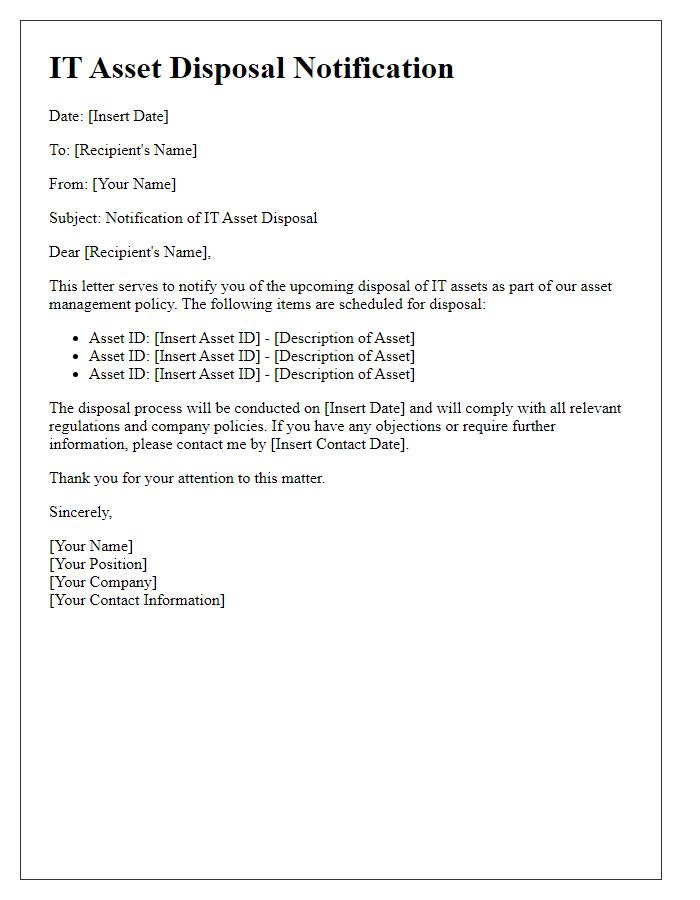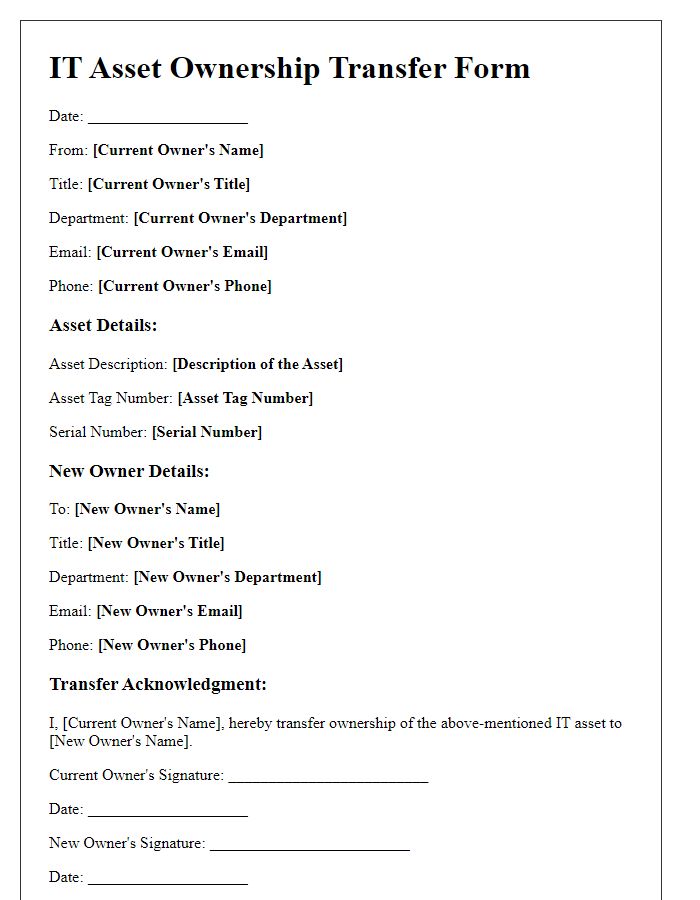In the fast-paced world of technology, effective IT asset management is crucial for keeping systems running smoothly and securely. With constant updates and new innovations, it's easy to lose track of your organization's valuable IT assets, which is why regular notifications are essential. This article will guide you through a comprehensive letter template designed specifically for notifying teams about IT asset management updates. Let's dive into the detailsâread on to streamline your asset management process!

Subject Line Optimization
Effective subject lines for IT asset management notifications should clearly indicate the content and urgency of the message. Example subject lines include "Immediate Action Required: IT Asset Inventory Update Due by October 31, 2023" or "Reminder: Upcoming IT Asset Audit Scheduled for November 15, 2023." These subject lines incorporate specific dates (October 31, November 15), actions (Inventory Update, Audit), and context (IT Asset Management) to ensure that recipients understand the importance and time sensitivity of the notification, enabling prompt action and compliance.
Recipient Personalization
IT asset management notifications must ensure precision in communication. For effective recipient personalization, details such as the recipient's name, department, and specific asset information are crucial. For instance, including the recipient's name (e.g., John Smith), department (e.g., IT Support), and equipment (e.g., Dell Latitude 7420 laptop) alongside relevant dates (e.g., warranty expiration on December 15, 2023) enhances the message's relevance. Additionally, referencing internal policies (e.g., company guidelines on asset returns within 30 days) adds a layer of clarity and urgency to the communication, ensuring recipients are aware of their responsibilities regarding the management of IT assets.
Clear Asset Details
Effective IT asset management ensures accurate tracking of hardware and software resources within an organization. Detailed asset records, including serial numbers, model specifications, and installation dates, are crucial for maintaining an updated inventory. Regular audits help identify discrepancies, ensuring compliance with licensing agreements and optimizing resource allocation. Maintenance schedules extend equipment lifespan, while risk assessments inform security measures to protect sensitive data. Utilizing asset management software, such as ServiceNow or Lansweeper, simplifies the process by providing real-time visibility and reporting capabilities, streamlining decision-making and budget planning. Keeping these details current supports efficient operations and enhances overall productivity.
Compliance and Policy Information
IT asset management involves the systematic tracking of software and hardware resources within an organization, ensuring compliance with industry regulations and internal policies. Accurate documentation of asset inventory is critical, where effective management can prevent unauthorized use of software applications, such as proprietary systems from Microsoft or Oracle. Regular audits, conducted approximately every six months, help identify discrepancies in asset records. Policy guidelines, established by organizations like ISO (International Organization for Standardization), offer protocols for the secure handling of sensitive data, including encryption standards for data storage. These measures enhance security and compliance, contributing to the organization's overall risk management framework.
Call to Action and Next Steps
IT asset management plays a crucial role in maintaining the efficiency of technology resources within an organization. Asset tracking systems ensure that all devices, such as laptops, servers, and peripherals, are accounted for and functioning optimally. Regular audits help verify the inventory, with the aim of reducing losses and improving asset utilization rates. Additionally, software management tools assist in monitoring licenses and compliance, ensuring that all applications are operating under valid agreements. Timely updates and patches prevent security vulnerabilities and safeguard sensitive data. Establishing protocols for asset procurement and disposal further enhances sustainability efforts, allowing organizations to contribute to environmental responsibility while effectively managing their technology investments.












Comments